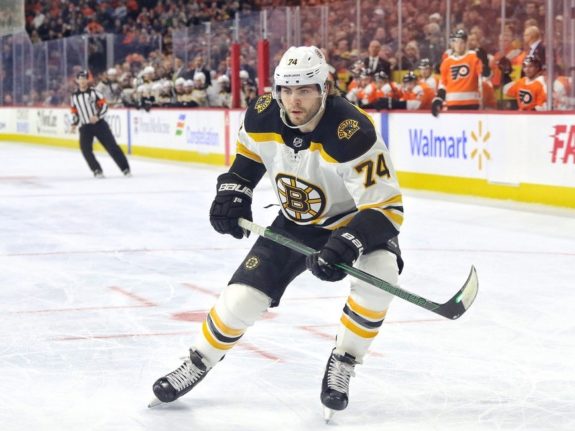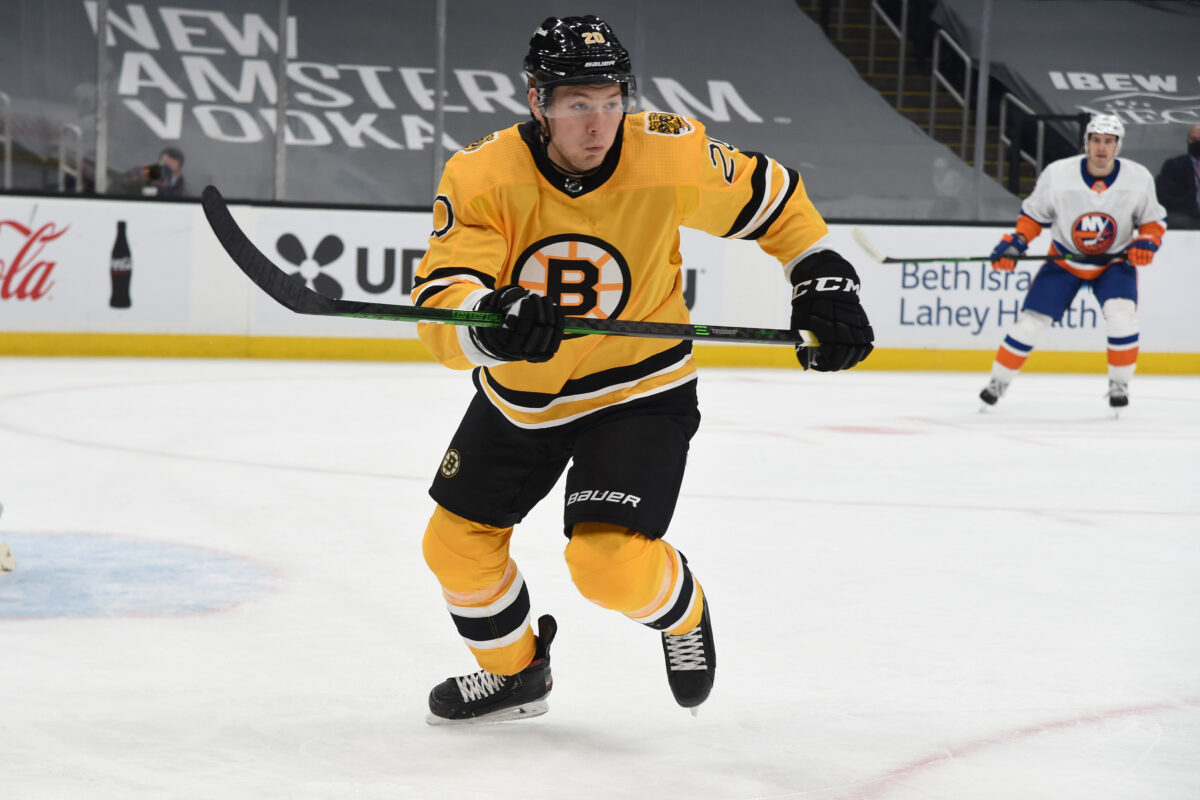As of Saturday afternoon, the Bruins season was officially over. Depending on who you ask, the season could be classified as a failure for failing to win a playoff round, or about par for the course given an aging team that had an inconsistent season and ran into one of their worst possible matchups in the playoffs. There are shortcomings to highlight, players who needed to step up and didn’t, management decisions that can be debated, and lineup choices that may or may not have panned out, but today, my task is to highlight some of the positives that came out of the series against the Carolina Hurricanes as we turn the page and begin preparing for the 2022-23 season.
Jake Debrusk Performed
In the final chapter of a saga that spanned the length of the season, Jake Debrusk capped off the Bruins season with the team’s only non-garbage time goal in Game 7. He seized the opportunity he was given when joining the top line of Patrice Bergeron and Brad Marchand, even though it meant Debrusk was on his off-side. The shelter of having two of the game’s top two-way forwards on a line was erased midway through Game 2 of the series as Bruce Cassidy returned David Pastrnak to the “Perfection Line”. Debrusk was the odd man out and bounced between the second and third lines as every combination under the sun was thrown together to try and ignite some form of offense from the rest of the forward group.
Debrusk’s five-on-five numbers may not have jumped off the page, but the fact he was producing at all is more than can be said for some of his linemates. Similarly, he was being tasked with playing in all situations, even leading to a Charlie Coyle shorthanded goal, and displacing Taylor Hall from the first power-play unit halfway through the series. All of this after requesting a trade part way through the season.

Now yes, that trade request has not been rescinded and Debrusk wouldn’t commit to wanting to remain in Boston, but he’s done everything the Bruins could have asked for. In his end-of-season remarks, head coach Bruce Cassidy said he was “proud of the way he played” when referring to Debrusk. Those were not words Debrusk had heard for the majority of the last couple of seasons, so maybe there is hope for a happy reunion after all. If not, he has only raised his stock should the Bruins seek a trade partner for the 25-year-old winger in the offseason.
Bruins Have Their Top Defensive Pair
In the mess of the series with the Hurricanes, one constant was the minute-eating production of the Bruins’ top defensive pairing. Charlie McAvoy and Hampus Lindholm continued their regular season productivity leading the team in ice time and being impactful forces against the continued onslaught of the Canes’ four-line attack. While the price to acquire Lindholm at the trade deadline from the Anaheim Ducks was steep, he has shown he was more than worth the haul. The Bruins now have their top pairing for years to come, a luxury in today’s NHL.
Although both players missed games throughout the series, McAvoy, after having to enter the NHL COVID protocols and Lindholm after sustaining an injury following an Andrei Svechnikov check in Game 2, the Bruins were able to take the series to the brink. With both of these players playing in every game, it could have been a different outcome. This, however, wasn’t the case. What the handful of games together did show was just how dynamic the duo can be on the ice. These two pillars on the blue line will continue to keep the Bruins competitive in the Eastern Conference for years to come.
Bruins Special Teams Did Their Job
The success or failure of a team in the playoffs can often be directly linked to its special teams success. The Bruins had shown a propensity for strong penalty killing throughout the season, but not in the three regular season meetings with Carolina. Whether the Bruins could stay out of the box was an early question (they couldn’t) but more importantly, whether the Bruins could kill the penalties they did take became a pressing issue (they could).
Related: Bruins’ Penalty Kill Will Be Key in Series Against Hurricanes
On the other end, the Bruins power play had gone ice cold over the final handful of games of the regular season. Those concerns carried into the series, but by Game 2 the Bruins found their footing and began to pile up power play goals, turning what had been a concern into a strength. This was all the more impressive given the Canes’ penalty killing prowess, having led the league during the regular season at an 88 percent penalty kill rate.

Obviously, special teams did not do enough to push the Bruins onto the second round, but these units didn’t hurt or hold the team back from their chance to advance. The bright spots, including the Coyle shorthanded goal set up by Debrusk and the power play clinic the first unit put on during Game 4 following Rod Brind’Amour’s failed challenge, highlighted the team’s ability to implement the coach’s game plan. Even if it didn’t work out this year, this is a model for success in the coming seasons.
On to 2022-23
The season did not end the way many Bruins fans had hoped, but the positives from the Canes series can be parlayed into next season. For now, the players will be resting and recovering, management will be compiling roster decisions, and scouts will be hustling to enact their draft boards in anticipation of the NHL Draft in Montreal this July. While there are plenty of questions that arose from this series that will linger throughout the offseason, let’s take this time to appreciate the effort and high points to the Bruins 2021-22 season in the meantime.